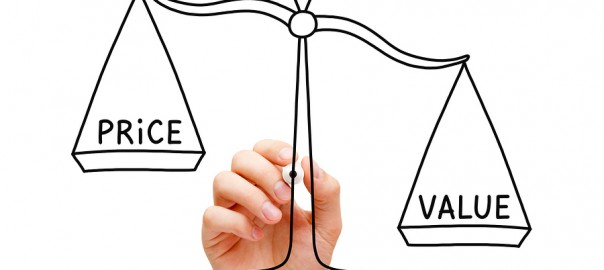
There are five main factors, three internal and two external that can influence the value of a privately held company:
Internal
- Quality of the business
- Projected cash flows
- Overall size of the company
External
- The industry segment
- Cost of and availability of capital in the marketplace
While owners can exercise control over the internal factors, they cannot over the external factors. Regardless, they can have a significant impact on business value.
In previous blogs, we have discussed attributes of a quality business:
- A strong management team
- Lack of owner dependence
- Strong balance sheet
- Low customer concentration
- Written processes and procedures
- Stable or even improving profit margins and revenues
The presence of these characteristics contributes to business value. In addition, a company on a growth trajectory that can demonstrate increasing cash flows through new customer acquisition, current customer retention, and increasing market share is always much more attractive to a buyer than one that has shown little growth or one that is merely keeping pace with inflation.
The company size is also a factor of business value, since a prospective buyer assumes a larger company has less risk than a smaller company. A company that has been able to achieve $ 10M or more in gross revenue while maintaining benchmark or above margins is viewed as a better opportunity than a company of lesser size. These companies also usually inherently possess the characteristics of a quality business we mentioned since these were required in order to achieve this size.
What about the external factors an owner has no control over? It is a fact that entire industries experience cyclical behavior, just as do individual businesses and the overall economy. At different times due to different events, industries can experience contraction, expansion, consolidation, and even explosive growth. Just consider how the events of 9/11 impacted industries related to security and anti-terrorism. These sectors experienced rapid growth after that horrendous attack.
In comparison, look at the cattle industry after the mad cow outbreak and the public fear that ensued, which drove beef prices down and cattle ranchers and related businesses through some very tough times. None of these events was directly under the control of the respective business owners, but they definitely felt the effects of the event. So industries that are considered “hot” usually achieve a higher-than-anticipated multiple during the time of expansion, but predicting when that might occur is rather speculative.
Another external factor that can have a major effect on business value is the cost of capital and its availability. In times of high interest rates or when the market is strained for capital due to investors sitting on the sideline and lenders tightening their credit policies, business values are negatively impacted. The cost of capital has a direct correlation to the return on investment buyers can achieve, and therefore, they will consider paying less if the capital is harder to obtain or costs them more. This also raises their perceived risk, which lowers the price they are willing to pay during these economic conditions.
We believe cycles occur that impact business transactions, as promoted by noted author Rob Slee in his acclaimed book, Private Capital Markets. Rob depicts a historical table that demonstrates transaction cycles lasting 10 years and indicating a seller’s market, a neutral market, and a buyer’s market. These cycles are indicative of external market forces and are agnostic to the internal business characteristics. If there is any validity to predicting these cycles, then a business needs to be adequately prepared for the current (through 2018) and the upcoming seller’s market predicted to be 2023‒2028.
A company that has prepared itself based on the internal characteristics of a quality business will be positioned to take advantage of the selling opportunity when it arises. Many business owners mistakenly believe there really isn’t any pattern to the sales cycles and can miss their prime sale opportunity and may have to wait for the next cycle. For some owners, this may be too long to wait. Health or retirement plans can force them to sell in a less-than-optimal situation and cycle resulting in a lower multiple and less transaction value.
We believe there is no substitute for proper preparation and planning. Owners cannot control external forces. They can, however, control the internal factors. In addition, being aware of cycles and understanding the external forces and their potential impact will assist owners in maximizing their company’s value. Being ready and knowing their optimal transition option empowers owners to be prepared to cash out and achieve their last great deal.
(294)
Report Post



